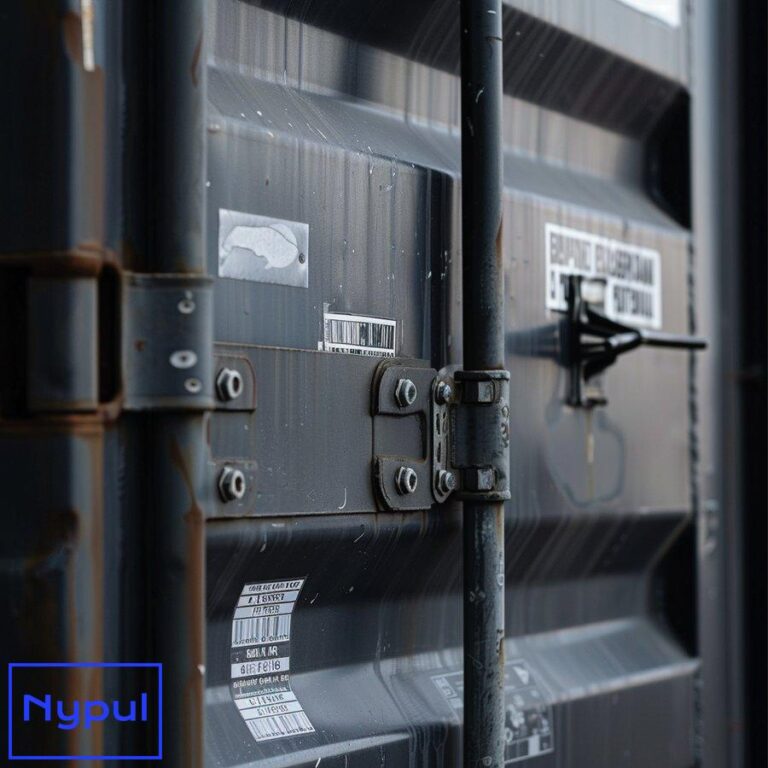What Is the Basic Rule for Load Securement
The fundamental principle of load securement is to ensure that cargo remains stable and intact during transport. This is crucial for the safety of drivers, other road users, and the integrity of the cargo itself. The basic rule can be summarized as follows: Cargo must be secured in such a way that it cannot shift, tip over, or fall from the vehicle during transit.
The importance of adhering to this rule cannot be overstated. Proper load securement prevents accidents, reduces the risk of damage to goods, and ensures compliance with regulatory standards. The Federal Motor Carrier Safety Administration (FMCSA) emphasizes that load securement is not just a best practice but a legal requirement for commercial vehicles.
Key Elements of Load Securement
-
Stability: Cargo should be balanced and evenly distributed across the vehicle to prevent tipping.
- How does the Federal Motor Carrier Safety Administration regulate load securement?
- What are the essential methods for securing cargo?
- How is Working Load Limit (WLL) calculated and applied?
- What are the specific securement rules for different cargo types?
- How should securement devices be inspected and maintained?
- What are the consequences of improper load securement?
- How can technology improve load securement practices?
Restraint: Use appropriate devices such as straps, chains, or nets to hold the cargo in place.
Protection: Ensure that cargo is protected from environmental factors and potential damage during transport.
Understanding these elements helps drivers and logistics professionals implement effective load securement strategies.
Semantic Triples
-
Load Securement: Cargo stability, proper restraint devices, environmental protection.
-
Safety Regulations: FMCSA guidelines, legal compliance, accident prevention.
How does the Federal Motor Carrier Safety Administration regulate load securement?
The FMCSA plays a critical role in establishing regulations that govern load securement practices for commercial vehicles. These regulations are designed to enhance safety on highways and roads by minimizing risks associated with unsecured loads.

Regulatory Framework
-
Federal Regulations: The FMCSA outlines specific requirements in Title 49 of the Code of Federal Regulations (CFR), particularly Part 393, which addresses cargo securement.
-
Standards for Securement Devices: The regulations specify the types of securement devices that can be used, their strength requirements, and how they should be applied based on the type of cargo.
-
Training Requirements: Drivers are required to undergo training on proper load securement techniques to ensure compliance with FMCSA standards.
Compliance and Enforcement
The FMCSA conducts inspections and audits to ensure adherence to these regulations. Non-compliance can lead to penalties, including fines and increased scrutiny during future inspections.
Understanding these regulations is essential for logistics professionals and drivers alike, as it directly impacts operational practices and safety measures.
Semantic Triples
- FMCSA Regulations: Cargo securement standards, training requirements, compliance enforcement.
What are the essential methods for securing cargo?
Securing cargo involves various methods tailored to different types of loads. Employing the right techniques ensures safety and compliance with regulations.
Common Methods of Load Securement
-
Strapping: Using ratchet straps or tie-downs to hold down cargo. This method is effective for flatbed loads and requires proper tensioning.
-
Blocking and Bracing: Utilizing wooden blocks or braces to prevent movement within the trailer. This method is ideal for irregularly shaped or heavy items.
-
Nets and Tarps: Covering cargo with nets or tarps can protect it from wind and debris while also providing additional restraint.
Table: Comparison of Load Securement Methods
| Method | Description | Best Use Cases |
|---|---|---|
| Strapping | Ratchet straps or tie-downs securing cargo | Flatbed loads |
| Blocking | Wooden blocks preventing lateral movement | Irregularly shaped items |
| Bracing | Using braces to stabilize heavy loads | Heavy machinery |
| Nets/Tarps | Covering cargo for protection | Loose items prone to shifting |
Selecting the appropriate method depends on factors such as cargo type, weight distribution, and transport conditions.
Semantic Triples
- Load Securement Methods: Strapping techniques, blocking materials, protective coverings.
How is Working Load Limit (WLL) calculated and applied?
The Working Load Limit (WLL) is a critical factor in load securement that determines how much weight a securement device can safely handle. Understanding how WLL is calculated helps ensure that loads are secured effectively without exceeding safety limits.
Calculating WLL
WLL is typically determined by considering several factors:

-
Material Strength: The intrinsic strength of the material used in the securement device (e.g., chains or straps).
-
Safety Factor: A multiplier applied to account for potential risks; commonly a factor of 3 for most applications (meaning only one-third of the rated capacity should be used).
-
Configuration: The way in which the securement device is configured can affect its capacity; for example, using multiple straps may increase overall strength.
The formula for calculating WLL can be expressed as:
$$
\text{WLL} = \frac{\text{Rated Capacity}}{\text{Safety Factor}}
$$
Application of WLL
When applying WLL in practice:
-
Always refer to manufacturer specifications for each securement device.
-
Regularly inspect equipment for wear or damage that could affect its strength.
-
Ensure that total cargo weight does not exceed the combined WLL of all securement devices used.
Understanding WLL not only enhances safety but also ensures compliance with regulatory standards set forth by organizations like FMCSA.
Semantic Triples
- Working Load Limit Calculation: Material strength assessment, safety factor application, configuration considerations.
What are the specific securement rules for different cargo types?
Different types of cargo require specific securement rules due to variations in weight distribution, shape, and fragility. Adhering to these rules helps prevent accidents and damage during transit.
Types of Cargo and Their Securement Rules
- General Freight:
- Use multiple tie-downs spaced evenly.
-
Ensure a minimum of one tie-down for every 10 feet of cargo length.
-
Heavy Equipment:
- Utilize chains rated for heavy loads.
-
Employ blocking techniques to prevent movement during transit.
-
Hazardous Materials:
- Follow specific guidelines outlined by DOT.
-
Use specialized containers designed for hazardous materials.
-
Loose Items (e.g., bags or boxes):
- Use nets or tarps to cover items.
- Ensure they are tightly secured with straps underneath.
Table: Securement Rules by Cargo Type
| Cargo Type | Securement Rules |
|---|---|
| General Freight | One tie-down per 10 feet; multiple tie-downs needed |
| Heavy Equipment | Chains rated for heavy loads; blocking required |
| Hazardous Materials | DOT guidelines; specialized containers |
| Loose Items | Nets/tarps; tight strapping |
Understanding these specific rules aids in selecting appropriate methods for securing various types of cargo effectively while ensuring compliance with safety regulations.
Semantic Triples
- Cargo Types: General freight rules, heavy equipment guidelines, hazardous material protocols.
How should securement devices be inspected and maintained?
Regular inspection and maintenance of load securement devices are vital components in ensuring their effectiveness and safety during transport. Neglecting this aspect can lead to failures that compromise both safety and compliance with regulations.
Inspection Procedures
Securement devices should undergo routine inspections based on the following criteria:
-
Visual Checks: Look for visible signs of wear, fraying, rusting, or deformation.
-
Functional Tests: Test mechanisms such as ratchets or hooks to ensure they operate smoothly without obstruction.
-
Load Testing: Periodically perform load tests on devices where applicable to verify their strength under operational conditions.
Maintenance Practices
To maintain optimal performance:
-
Clean devices after use to remove dirt or debris that could cause corrosion.
-
Store devices properly in a dry environment away from direct sunlight or extreme temperatures.
-
Replace any damaged equipment immediately before further use.
Implementing a structured inspection and maintenance schedule ensures that all load securement devices remain reliable throughout their operational lifespan.
Semantic Triples
-
Securement Device Inspection: Visual checks, functional testing, load testing procedures.
-
Maintenance Practices: Cleaning protocols, proper storage methods, replacement policies.
What are the consequences of improper load securement?

Failing to properly secure loads can have severe consequences that extend beyond regulatory fines. Understanding these implications underscores the importance of adhering to best practices in load securement.
Potential Consequences
- Accidents and Injuries:
- Unsecured loads can shift during transit leading to loss of vehicle control.
-
Falling cargo poses significant risks to other road users resulting in injuries or fatalities.
-
Legal Repercussions:
- Non-compliance with FMCSA regulations can result in hefty fines.
-
Companies may face legal action from injured parties due to negligence claims related to improper load securement practices.
-
Damage to Goods:
- Improperly secured items may sustain damage during transport due to shifting or falling.
-
This can lead not only to financial losses but also reputational harm if customers receive damaged products.
-
Increased Operational Costs:
- Companies may incur additional costs related to accidents (repairs, insurance claims).
- Replacing damaged goods adds financial strain on logistics operations impacting profitability long-term.
Understanding these consequences highlights why proper training in load securement practices is essential within logistics operations.
Semantic Triples
- Consequences of Improper Securement: Accidents leading injuries, legal repercussions from negligence claims, financial losses due damaged goods received by customers.
How can technology improve load securement practices?
Advancements in technology offer innovative solutions that enhance load securement practices across various sectors within logistics operations. Embracing these technologies can lead not only improved safety but also greater efficiency overall.

Technological Innovations in Load Securement
- Smart Sensors:
-
These devices monitor load stability in real-time providing alerts if movement occurs during transit.
-
Automated Strapping Systems:
-
Automated systems reduce manual labor while ensuring consistent tension across all straps improving overall effectiveness.
-
Mobile Applications:
-
Apps provide checklists for drivers before departure ensuring all necessary steps are taken regarding securing loads properly.
-
Data Analytics Tools:
- Analyzing historical data allows companies identify trends related accidents caused by improper loading helping inform training programs moving forward.
Embracing technology enhances operational efficiency while simultaneously improving safety outcomes within logistics operations emphasizing accountability at every level involved in transporting goods securely.
Semantic Triples
- Technology Enhancements: Smart sensors monitoring stability; automated systems improving efficiency; mobile apps facilitating compliance checks.
By understanding these comprehensive aspects surrounding load securement—from basic rules through technological innovations—logistics professionals can significantly enhance their operational practices ensuring safer roadways while protecting valuable assets transported daily across various industries worldwide.





